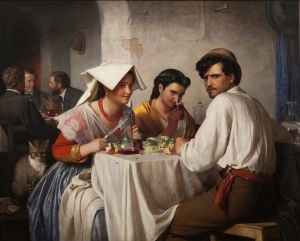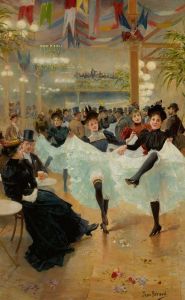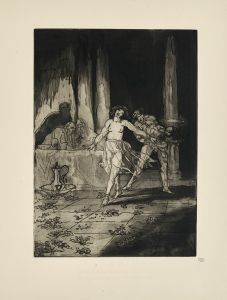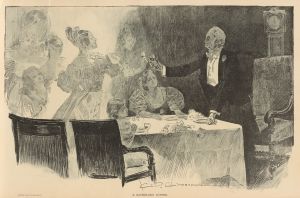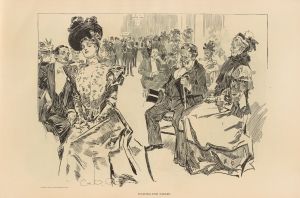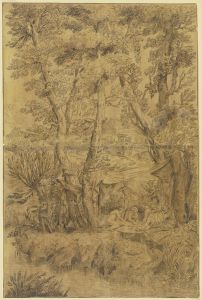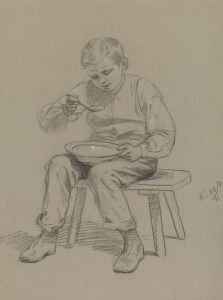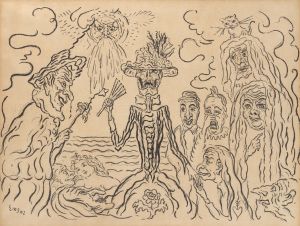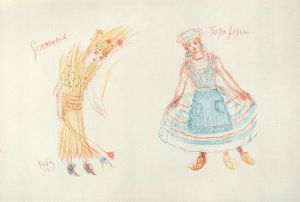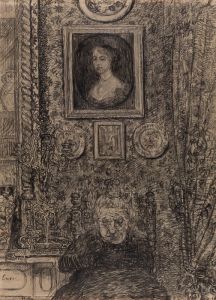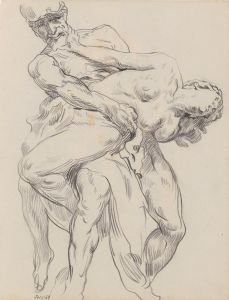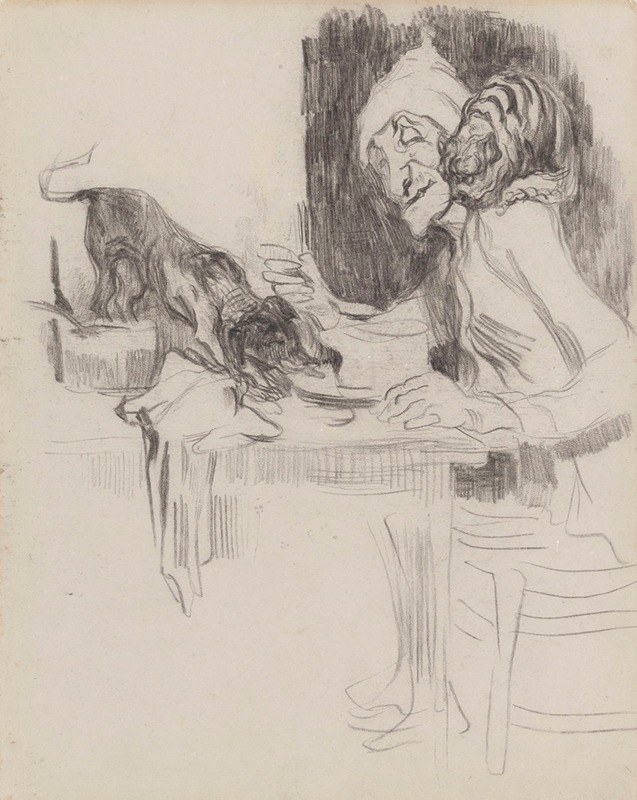
Dining Single man
A hand-painted replica of James Ensor’s masterpiece Dining Single man, meticulously crafted by professional artists to capture the true essence of the original. Each piece is created with museum-quality canvas and rare mineral pigments, carefully painted by experienced artists with delicate brushstrokes and rich, layered colors to perfectly recreate the texture of the original artwork. Unlike machine-printed reproductions, this hand-painted version brings the painting to life, infused with the artist’s emotions and skill in every stroke. Whether for personal collection or home decoration, it instantly elevates the artistic atmosphere of any space.
James Ensor was a Belgian painter and printmaker, known for his unique and often eccentric style that played a significant role in the development of Expressionism and Surrealism. One of his intriguing works is "Dining Single Man," a painting that exemplifies his distinctive approach to art.
"Dining Single Man" is a work that reflects Ensor's fascination with themes of isolation and the grotesque. Ensor often explored the human condition through a lens of satire and absurdity, and this painting is no exception. The piece depicts a solitary figure seated at a dining table, surrounded by an array of food and drink. The setting is intimate yet unsettling, a common characteristic of Ensor's work, which frequently juxtaposes the familiar with the bizarre.
Ensor's use of color and light in "Dining Single Man" is noteworthy. He employs a palette that is both vibrant and jarring, with bold contrasts that draw the viewer's attention to the central figure and the surrounding elements. This use of color serves to heighten the sense of unease and introspection that permeates the painting. The lighting, often stark and dramatic, further emphasizes the isolation of the figure, casting shadows that add depth and complexity to the scene.
The composition of "Dining Single Man" is carefully constructed to convey a sense of imbalance and tension. The figure's posture and expression suggest a state of contemplation or melancholy, while the abundance of food and drink implies excess or indulgence. This dichotomy is a recurring theme in Ensor's work, where he often critiques societal norms and human behavior through exaggerated and surreal imagery.
Ensor's background and influences are essential to understanding "Dining Single Man." Born in Ostend, Belgium, in 1860, Ensor was exposed to a diverse range of cultural and artistic influences throughout his life. His early exposure to the carnival-like atmosphere of Ostend, with its masks and parades, left a lasting impression on his artistic vision. This influence is evident in many of his works, including "Dining Single Man," where elements of masquerade and theatricality are subtly present.
Throughout his career, Ensor was associated with the avant-garde group Les XX, which included artists who challenged traditional artistic conventions. His work often defied categorization, blending elements of Impressionism, Symbolism, and early Modernism. "Dining Single Man" exemplifies this eclectic style, combining realistic detail with fantastical elements to create a unique and thought-provoking piece.
Ensor's legacy as an artist is marked by his ability to capture the complexities of the human experience through a distinctive and often unsettling lens. "Dining Single Man" is a testament to his skill in conveying emotion and commentary through art, inviting viewers to reflect on themes of solitude, excess, and the absurdity of life. While not as widely known as some of his other works, this painting remains an important part of Ensor's oeuvre, showcasing his innovative approach to art and his enduring influence on future generations of artists.





